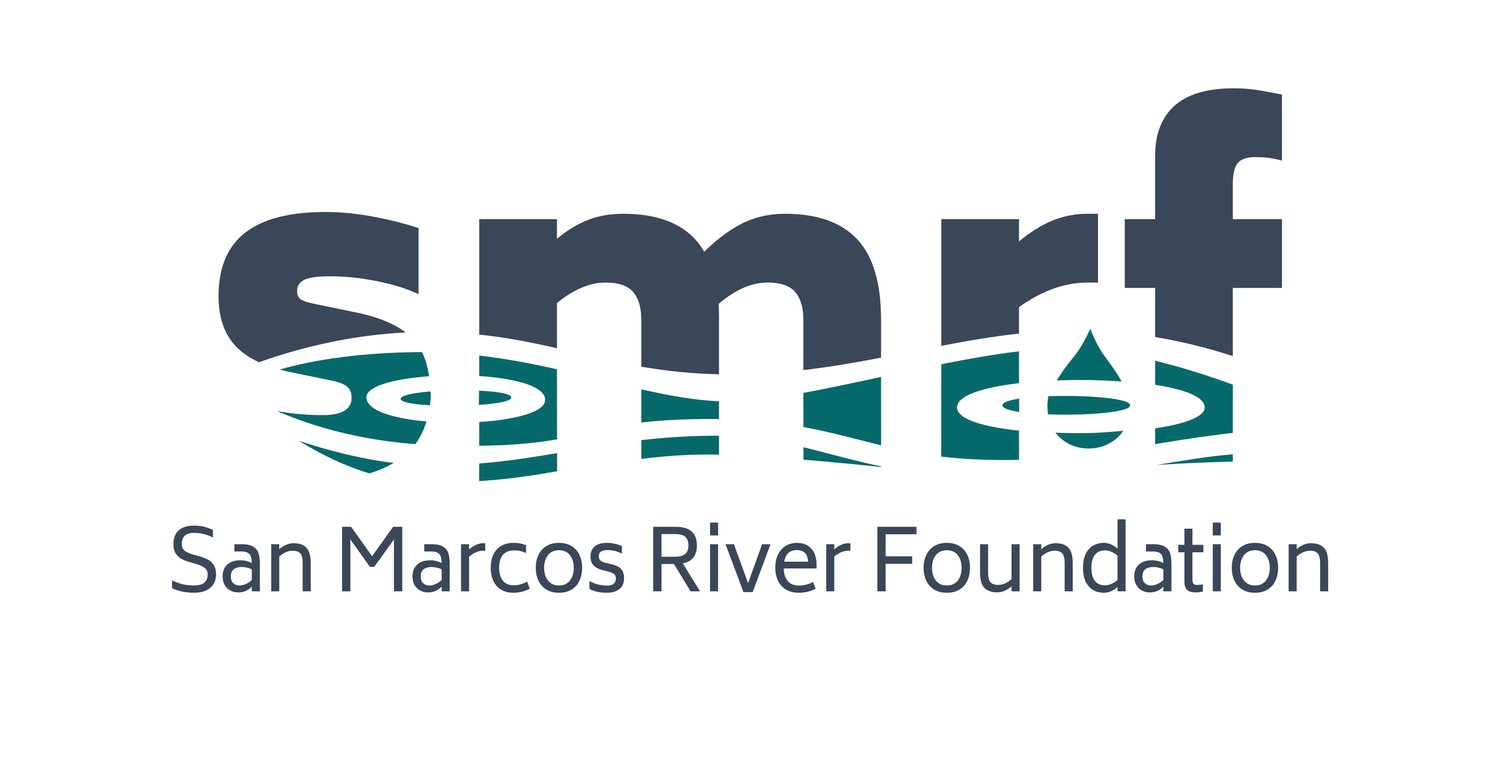
Projects
Wastewater Treatment Standards
SMRF’s early years focused on building community support for the protection of the river and identifying areas with poor water quality. Starting with community-wide river clean ups and volunteer water quality monitors, SMRF broadened its scope and challenged the City of San Marcos’s wastewater discharge permit in the 1980’s. Arguing that the city could and should treat effluent to a higher standard to clean up heavily polluted waters downstream, SMRF prevailed and other entities voluntarily followed suit and adopted similar standards. Wastewater discharge issues continue to be a concern and SMRF is currently working on several proposed wastewater permits for subdivisions near the river to ensure that the effluent discharged into nearby creeks is treated to the highest standards possible in order to minimize damage to the river ecosystem and local water supplies.
Make sure to read our newsletter for any updates to current wastewater permit requests that we are working to improve!
TCEQ Wastewater Permitting & Challenge Process
Since its founding, SMRF has advocated for better wastewater treatment practices to protect water quality in the San Marcos River, and has successfully challenged new and renewing wastewater permits. SMRF can represent our members* in the impacted areas, and have our own lawyers who specialize in these cases.
(Annual membership in SMRF is typically $35)
We also monitor incoming developments that will be discharging effluent into tributaries of the San Marcos River, review permit applications, and encourage developers to adopt best practice standards. When possible, we ask that they connect their wastewater to existing city facilities for a regional approach, where they are monitored 24 hours a day, and generally adhere to higher standards. In outlying areas which cannot connect to these larger facilities, and instead operate their own smaller “package plants,” we typically ask that their permit include these things listed below, among other things, to protect water quality in the river:
Notes:
mg/L = Milligrams per Liter
1 mg = 1000 micrograms
Carbonaceous Biochemical Oxygen Demand Limit Goal: 5 mg/L
CBOD readings are based on the amount of oxygen depletion from carbonaceous sources in a body of water, and worsened by high amounts of total suspended solids (TSS). This is the first stage in wastewater treatment in which microorganisms attack organic (or carbon) compounds, such as solid waste, antifreeze, residual food waste, emulsified oils, dying bacteria cells, and soluble organic compounds.
Total Suspended Solids (TSS) Limit Goal: 5 mg/L
High levels of TSS can affect water quality by decreasing dissolved oxygen (DO) in the river, increasing turbidity, and increasing water temperature. TSS in waterways can be from industrial discharges, sewage, fertilizers, road runoff and soil erosion. This can negatively affect aquatic wildlife, habitat, and the food chain.
Ammonia Nitrogen Limit Goal: 2 mg/L
High concentrations of ammonia in wastewater can be toxic to aquatic wildlife and cause eutrophication which depletes oxygen levels, kills fish, and facilitates algae blooms. Nitrogen is a nutrient that increases plant growth, and in excess, can lead to a nutrient imbalance in our waterways.
Total Phosphorus Limit Goal: 0.15 - 0.5 mg/L
Phosphorous is a nutrient that increases plant growth, and excess phosphorous can pollute waterways, cause explosive algae growth, deplete oxygen, and negatively impact aquatic ecosystems. TCEQ measures Total Phosphorus in milligrams per liter (mg/L), however there is data stating that as little as 0.002 mg/L (20 micrograms per liter) can lead to algal growth.
(There are currently two permits pending in the region which are requesting 0.15 mg/L: Dripping Springs and Belterra. Residents along the South Fork San Gabriel have challenged the Liberty Hill wastewater permit, requesting total phosphorus be lowered to 0.015 mg/L (15 micrograms per liter), and thus far the TCEQ Commissioners have agreed with the residents. Residents along Onion Creek are also making a request for a permit requiring 0.015 mg/L as well. TCEQ has not yet issued a decision on this permit application.)
Dissolved Oxygen (DO): Limit Goal: 6 mg/L
DO is a water quality parameter to ensure an adequate amount of oxygen is present during the wastewater treatment process and dispersed into the treated effluent. This allows aerobic microorganisms to successfully convert organic waste into inorganic byproducts during the second phase of treatment. DO is also critical for aquatic wildlife health.
Chlorine vs Ultra-Violet (UV) Light Treatment:
Our preference in treatment is UV Light Treatment. However, if chlorine is used for treatment, we prefer the chlorine to be fully removed before discharge into a waterbody.
Wastewater Reuse:
Discharged effluent treated to the highest standards or zero discharge into the river and its tributaries would be ideal, however treated wastewater re-use for non-potable reuse applications is beneficial, and full cycle Direct Potable Reuse (DPR) is even better. Typically reuse of treated effluent is not included in the permit, so this is something we try to add to ensure that it is required. Non-potable reuse of treated wastewater prevents the nutrients in discharged wastewater from destroying the ecosystems in streams and the river, and could instead be used for landscaping, agricultural irrigation, and cooling water for power plants or factories or concrete. 60% of water used in the Texas Hill Country is used on lawns, landscaping and agriculture, which is a wonderful recipient of wastewater since these plants thrive on nutrients like nitrogen and phosphorus (fertilizers). DPR would cycle the water back into the drinking water supply.
TLAP:
Texas Land Application Permit: This permit is needed for any plant to reuse part or all of their wastewater and is different from the wastewater application permit request.

